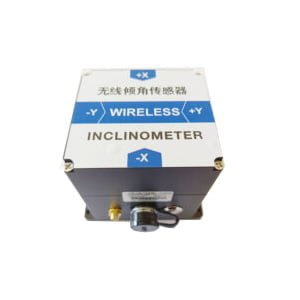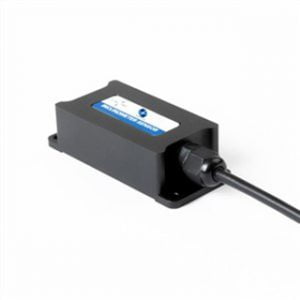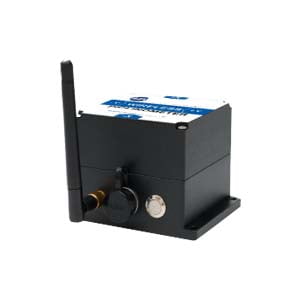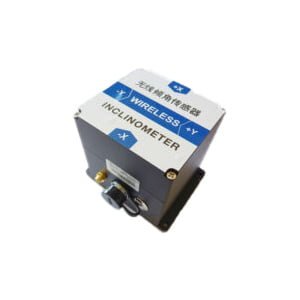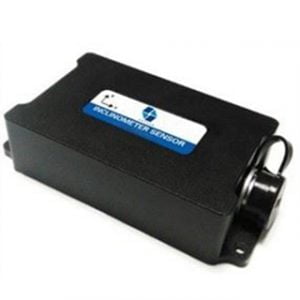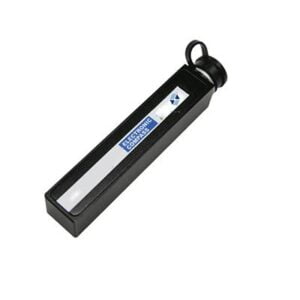In today's industrial and commercial environment, tilt sensors are increasingly used to measure and monitor the tilt angle of equipment or structures. Depending on the data transmission method, tilt meters can be divided into wired and wireless types. In this article, we'll delve into both types of tilt sensors, including the pros and cons, and how to choose the best solution for your specific needs.
1. Advantages&disadvantages of wired tilt sensor
Wired inclination sensor built-in high performance MCU built-in algorithm, through a high oversampling rate, improve the high frequency characteristics of the data, through the data filtering algorithm to remove unreasonable accidental error data, Kalman filter algorithm for higher precision data processing, suitable for monitoring the structure deformation monitoring field with high monitoring frequency requirements. Wired tilt meters usually use RS485 bus or other similar bus protocols to transmit inclination signals. RS485 is a serial communication protocol widely used in the field of industrial automation, which has the advantages of noise suppression and high signal quality. ER-TS-3160VO is a linear inclination sensor with an accuracy of 0.01°, its cable standard length is 1.5m, and it can output RS232 at the same time, RS485 can be customized, the measurement range can reach 0~±180°, and the impact vibration resistance is strong.
The main advantage of the wired tilt meters is that the signal stability is high, and the signal quality is not easy to be disturbed because of the wired transmission mode. In addition, wired sensors have a long service life, lower maintenance costs, and a lower failure rate. However, this sensor also has some disadvantages, such as the need to lay cables, high requirements for the field environment, may exist in some application scenarios wiring difficulties.
2. Advantages&disadvantages of wireless tilt sensor
Wireless tilt meters have become more and more popular in recent years, and common wireless inclination sensors include NB-IoT wireless inclination sensors and LORO wireless inclination sensors. These sensors transmit tilt signals via wireless communication technology without cable connections, making them highly flexible.
The main advantages of wireless tilt sensors are their flexibility and convenience. Since no wiring is required, the sensor can be easily installed anywhere it is needed, without considering the laying of cables. In addition, wireless sensors also have the advantages of high mobility, easy expansion and maintenance. However, wireless sensors also have some disadvantages, such as signal quality may be affected by radio interference, and signal stability and reliability may not be as good as wired sensors. ER-TS-12200-Modbus is a high-precision tilt sensor using Bluetooth and ZigBee wireless transmission technology of the internet of things, eliminating the complicated wiring and noise interference caused by long cable transmission, using lithium battery power supply, good long-term stability, zero drift, can automatically enter low-power sleep mode, get rid of the dependence on the use of environment.
Generally speaking, the mass of the building structure is huge, and the rate of change of inclination is relatively small, and there is a development process. The sampling frequency of conventional structural health monitoring is not high, and once a day can meet the requirements. In this case, the choice of the wireless inclination sensors with its own battery is the most appropriate, and the installation is very convenient.
3. How to choose the most suitable tilt sensor for you according to the transmission mode
When choosing a tilt meter, you need to consider the following factors:
(1) Application scenarios: Different application scenarios have different requirements for sensors. For example, in some scenarios where long-term stability measurements are required, wired sensors may be preferred; Some use cases, such as house monitoring, basically have 220V mains power in the field, and low cost wired tilt sensors can be used. Of course, for monitoring scenarios with high acquisition frequency requirements, choosing a wired inclination sensor is a wise choice. In scenarios that require flexible deployment, easy scaling and maintenance, wireless sensors may be more suitable.
(2) Signal quality: For some application scenarios that require high-precision measurement, such as precision equipment monitoring or large-scale structure monitoring, it is necessary to choose a wired sensor with higher signal quality. For some application scenarios with low precision requirements, such as logistics and transportation, agricultural monitoring, etc., wireless sensors may be enough to meet the needs.
(3) Cost and maintenance: For some application scenarios that require a large number of sensors to be deployed, such as large-scale facility monitoring or logistics tracking, the deployment and maintenance cost of wireless sensors may be lower. For some cost-sensitive scenarios, such as small device monitoring or small structure monitoring, the cost of wired sensors may be lower.
(4) Durability and reliability: For some scenarios that require long-term continuous operation, such as equipment monitoring and fault warning systems in petrochemical, electric power and other fields, it is necessary to choose wired sensors with higher durability and reliability. For some scenarios that require portable and temporary use, such as construction sites, agricultural monitoring, etc., wireless sensors will be more suitable.
In short, when choosing an inclination sensor, it is necessary to choose according to actual needs and specific scenarios. Both wired and wireless sensors have their own advantages and scope of application. Only by fully understanding the characteristics and application scenarios of various sensors can we make the most appropriate choice.
More Technical Questions
2.What are the Three Types of Tilt Sensor?
3.What can a Tilt Sensor be Used for?
4.Is a Tilt Sensor the Same as as an Accelerometer?
5.Is Tilt Sensor Analog or Digital?
6.What are the Advantages of Tilt Sensor
Products in Article
